Boreal Lake
Photos
Example images of some soft
water boreal lakes that are susceptible to aqueous calcium decline.
|
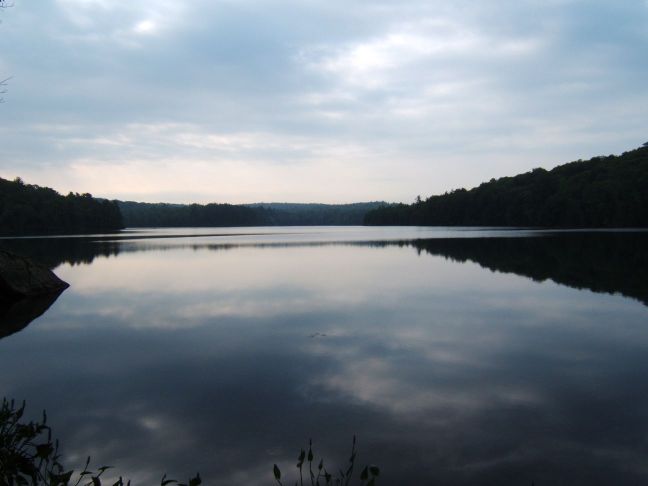
|
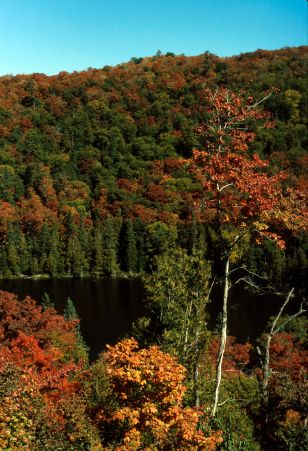
|
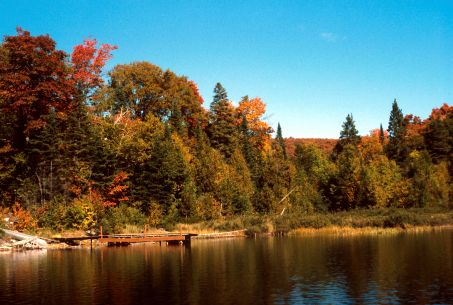
|
A typical boreal lake, in the
Muskoka-Haliburton region of Ontario.
(Photo: Kris Hadley, Queen's University)
|
A boreal lake situated in the
Turkey Lakes Watershed of the Algoma Region of central Ontario.
(Photo: Dean Jeffries, Environment Canada)
|
Another example of a boreal lake
in the Turkey Lakes Watershed.
(Photo: Dean Jeffries, Environment Canada)
|

|
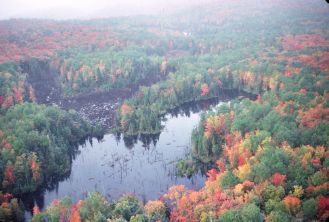
|
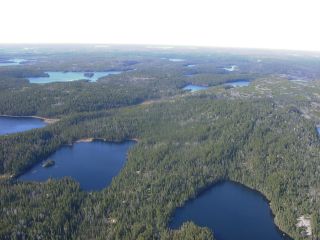
|
An aerial view of Plastic
Lake. Sediment cores from this lake were examined in the study.
(Photo: Canadian Wildlife Service (Ontario Region))
|
Aerial photo of a boreal lake
typical of Northern Ontario.
(Photo: Canadian Wildlife Service (Ontario Region))
|
Aerial landscape photo showing a
number of boreal lakes typical of Northern Ontario.
(Photo: Canadian Wildlife Service (Ontario Region))
|
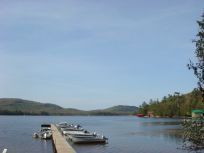
|
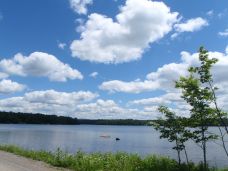
|
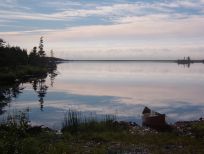
|
Big Moose Lake, NY, USA. Located
in the Adirondacks, this is another one of
the lakes examined in the study.
(Photo: Brian Cumming, Queen's University)
|
A typical Adirondack lake, NY,
USA.
(Photo: Brian Cumming, Queen's University) |
An example of a boreal lake in
Nova Scotia, Canada.
(Photo: Brian Ginn, Queen's University)
|
|
Crustacean
Zooplankton
These images are of small animals (crustacean zooplankton) that are
common herbivores in aquatic systems. Daphnia are often
referred to as "water fleas"
|
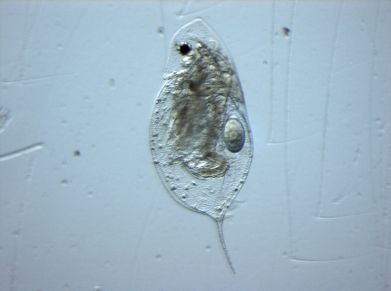
|
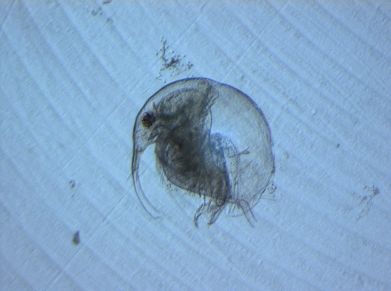
|
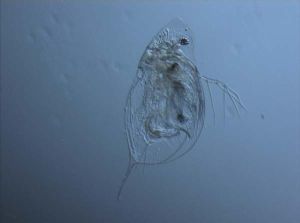
|
Daphnia
mendotae - an example of a calcium-rich crustacean zooplankton.
(Photo: Shelley Arnott, Queen's University)
|
Bosmina
sp. - an example of a calcium-poor
crustacean zooplankton.
(Photo: Jessica Forrest) |
Another example of Daphnia mendotae - a calcium-rich
crustacean zooplankton.
(Photo: Jessica Forrest) |
Crustacean
Zooplankton Fossils
These images are of
individual parts of crustacean zooplankton that preserve in lake
sediments.
Counting changes in the abundances of these remains allows
paleolimnologists to make inferences of past population fluctuations in
these indicators. |
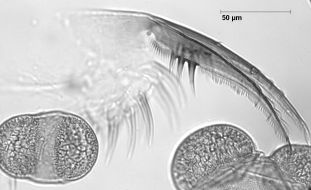
|

|
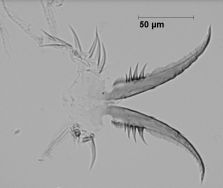
|
Post-abdominal claw from a
calcium-rich daphniid, one of its body parts that preserves well in
sediments.
(Photo: Anna DeSellas, Queen's University)
|
Bosmina
sp. carapace, one of its body parts that preserves well in lake
sediments.
(Photo: Anna DeSellas, Queen's University)
|
Another view of a post-abdominal
claw from a calcium-rich daphniid fossil from lake sediments.
(Photo: Anna DeSellas, Queen's University) |
Paleolimnology
Fieldwork
Images of field crews
obtaining the lake sediment cores used in paleolimnological analyses
|
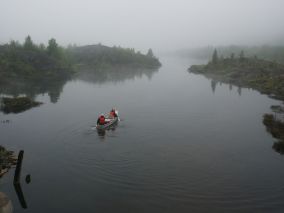
|
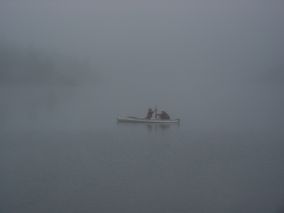
|
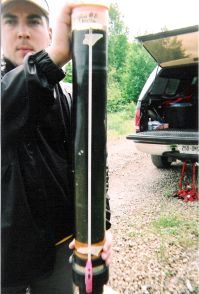
|
A field crew setting out to
collect a sediment core from the deep basin of a lake.
(Photo: Wendel Keller)
|
Field crew retrieving a sediment
core.
(Photo: Wendel Keller)
|
A sediment core collected,
measured and
ready to be sectioned.
(Photo: Christine Greenaway, Queen's University)
|
|
|
|
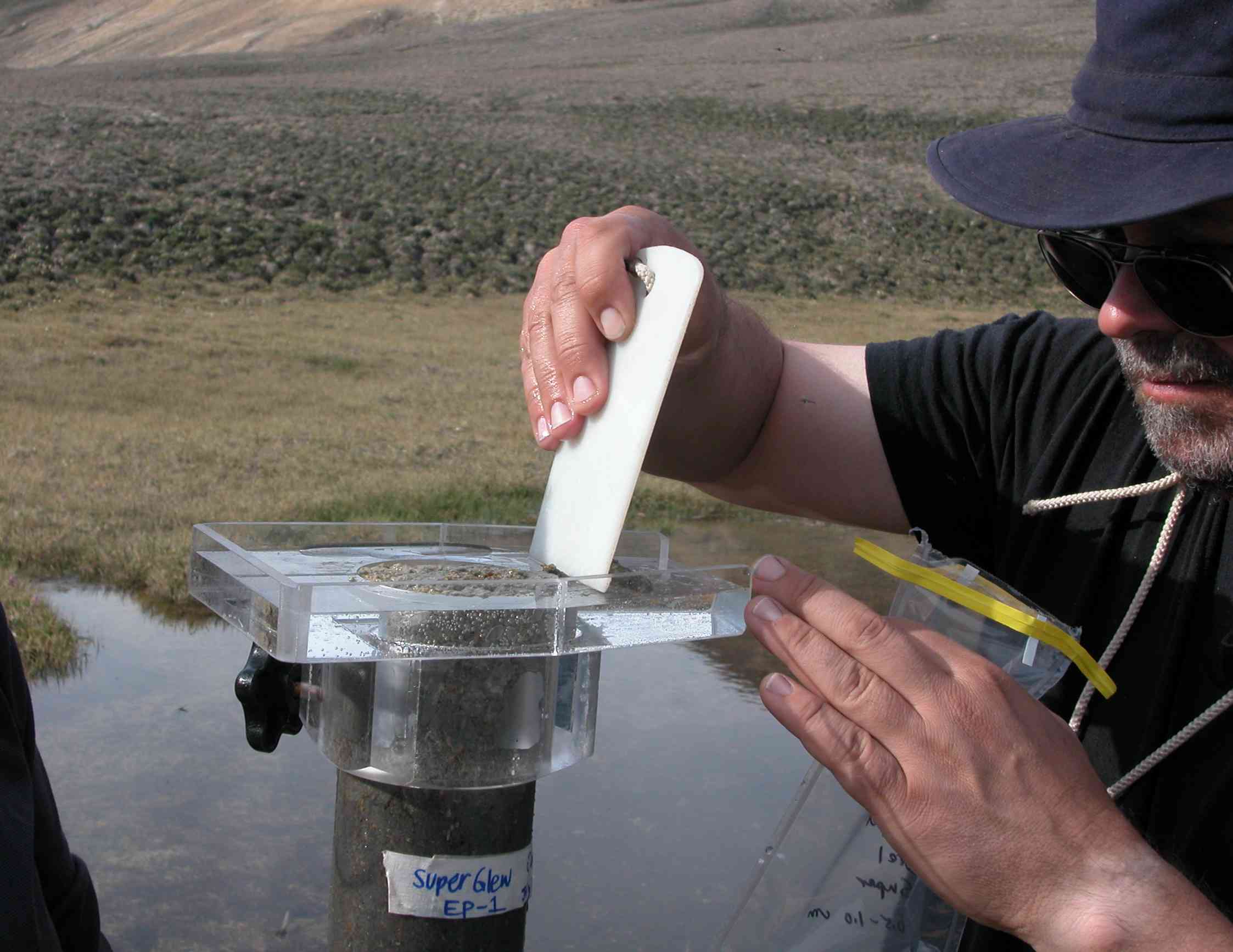
|
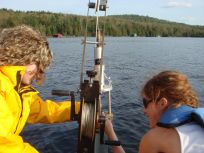
|
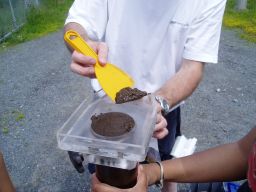
|
A sediment core being extruded
into sections.
(Photo: Marianne Douglas, University of Alberta)
|
In deeper lakes, a winch system
is sometimes used to aid in retrieval of the sediment cores.
(Photo: Brian Cumming, Queen's University)
|
Slicing of a sediment core into
individual 0.5 cm sections. The deeper you go in the sediments, the
older it is.
(Photo: Brian Ginn, Queen's University)
|
Other
calcium-rich biota potentially sensitive to calcium decline
Examples of other aquatic
biota that require large amounts of calcium and may be negatively
impacted by reduced aqueous calcium availability
|
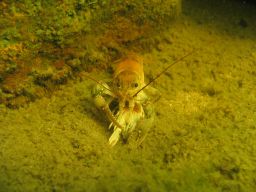
|
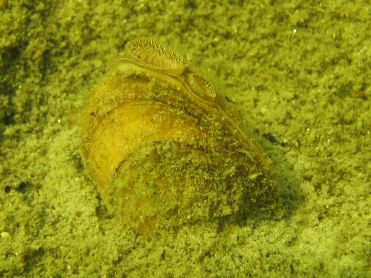
|
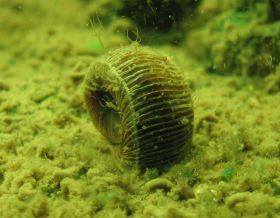
|
The high calcium content of
crayfish may make them another group potentially sensitive to calcium
decline. [A pair of Orconectes
virilis in Lake 239 at the ELA].
(Photo: Michael Turner, Fisheries and Oceans Canada)
|
The high calcium content of
mussels may make them another taxonomic group potentially sensitive to
calcium decline.
[Photo shows a Pyganodon grandis
grandis individual from Lake 375 at the ELA].
(Photo: Michael Turner, Fisheries and Oceans Canada) |
The high calcium content of
snails and other gastropods may make them another taxonomic group
potentially sensitive to calcium decline.
[This snail (taxonomic identity uncertain) is from Lake of the Woods
and is acting as a host surface for Hydra].
(Photo: Michael Turner, Fisheries and Oceans Canada) |
